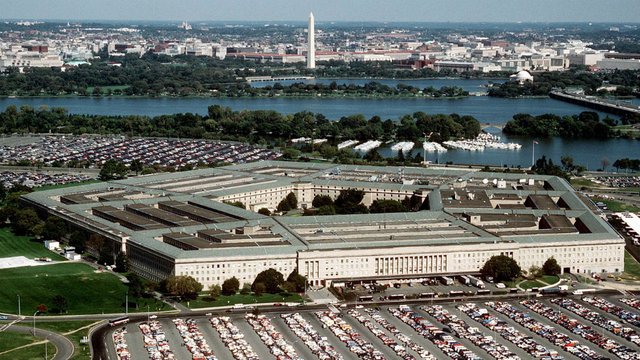
By Mark Curtis, Declassified UK, 1/23/24
Mark Curtis is the editor of Declassified UK, and the author of five books and many articles on UK foreign policy.
- UK will provide “equipment across land, air and sea” in any future Russian attack
- British arms firms have sent £437m worth of equipment to Ukraine since Russia’s invasion
A new agreement signed by Rishi Sunak and Ukrainian President Volodymr Zelensky on 12 January provides UK “security commitments” to Ukraine in the event of “new aggression” by Moscow.
It states: “In the event of future Russian armed attack against Ukraine, at the request of either of the Participants, the Participants will consult within 24 hours to determine measures needed to counter or deter the aggression”.
It then says the UK “undertakes” to “provide Ukraine with swift and sustained security assistance, modern military equipment across all domains as necessary.”
Strikingly, the text also encourages Ukraine to “provide effective military assistance” to Britain in the event of an attack on the UK – similar to Nato’s mutual defence pledge – although it does not make this a formal commitment for Kyiv.
Zelensky used the words “security guarantees” or “guarantees” when describing the agreement at a press conference in Kyiv following its signing.
Sunak has tended to use the phrase “security assurances”. The text does not refer to “guarantees” but to “security commitments”.
Assurances
Some commentators say such “commitments” are toothless and do not provide a hard defence guarantee. They compare them to the 1994 Budapest Memorandum when Ukraine agreed to give up its Soviet nuclear arsenal in exchange for “security assurances” which never materialised.
Neither has the agreement yet been ratified by either country’s parliament, meaning its legal position is uncertain.
Perhaps most importantly, the accord does not explicitly commit Britain to despatching military forces to Ukraine by providing boots on the ground. However, a risk is that it could embroil the UK in any future war with Russia.
Describing the agreement in parliament, Sunak stated that “if Russia ever invades Ukraine again, we will provide swift and sustained assistance, including modern equipment across land, air and sea. Together with our allies, the UK will be there from the first moment until the last.”
The accord is a further step towards Nato membership for Ukraine. It increases UK military cooperation with Kyiv intending “to deepen Ukraine’s interoperability with Nato”, “accelerate Ukraine’s transition to Nato equipment and standards” and develop “a pathway to a future in Nato”.
The accord has arisen from Nato’s summit in Lithuania last July in which G7 states pledged to make a series of bilateral security agreements with Ukraine.
More arms
But the agreement goes beyond security commitments, and Britain’s arms exporters will likely be major beneficiaries.
In a section on “defence industry cooperation”, the text says the UK will work with arms companies and Ukraine to “identify opportunities for closer defence industrial partnerships and collaboration including for mutual commercial benefit”.
Britain “will encourage its defence industry to work with Ukraine” on “manufacturing of UK defence products” in the country.
The Ukraine war has been a boon for UK arms firms. Since Russia’s invasion in February 2022, they have exported £437m worth of military equipment to Ukraine – over 12 times more than they sold in the previous ten years.
Both Babcock and BAE, the UK’s largest arms exporter, have recently set up offices in Ukraine, positioning themselves to secure new deals.
BAE’s agreement with Ukraine will “ramp up the company’s support to Ukraine’s armed forces” and enable BAE “to work alongside” them “to… support its future force structure”.
Disinformation
A section in the text on “information security” notes that Britain will also help Ukraine counter Russian propaganda “globally” – or “support each other’s efforts to tell the truth well”, as the document quaintly puts it.
The two countries will work together “offering the world a truthful alternative to the Russian Federation’s disinformation campaigns” which will involve “closer collaboration of communications output”.
Britain’s Foreign Office is already spending millions on private “counter-disinformation” groups which tend to support UK government policy positions, such as over Ukraine.
Declassified found before Russia’s invasion of Ukraine that the British government ploughed at least £82.7m of public money into media projects in countries bordering or near Russia in the four years to 2021.
The UK government’s funding of the “counter-disinformation” industry looks more like an information operation in itself rather than a neutral effort to combat fake news.
Private sector
A further commitment is ensuring Ukraine promotes pro-Western economic policies through reforms and postwar reconstruction.
“Before this terrible war, Ukraine’s economy was becoming a huge investment opportunity,” then foreign minister Leo Docherty said at the Ukraine Recovery Conference hosted in London last June.
That conference urged “international businesses” to invest in Ukraine in its “ambitious reform agenda”, including “reducing the size of the government”, “privatization”, “deregulation” and “investment freedom”.
The new agreement reinforces these goals. Ukraine will have “a strong private sector-led economy… that is integrated into global markets”, the text states. This involves Kyiv fully implementing IMF reforms, promoting measures “to increase investor confidence” and “unlock private investment”.
In this, the UK will “support” activities in economic sectors such as energy, infrastructure and tech.
